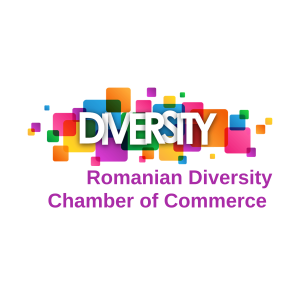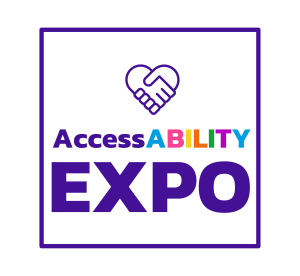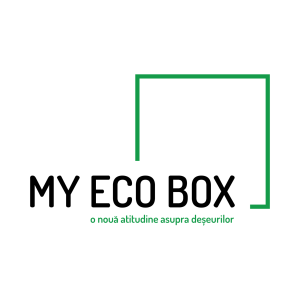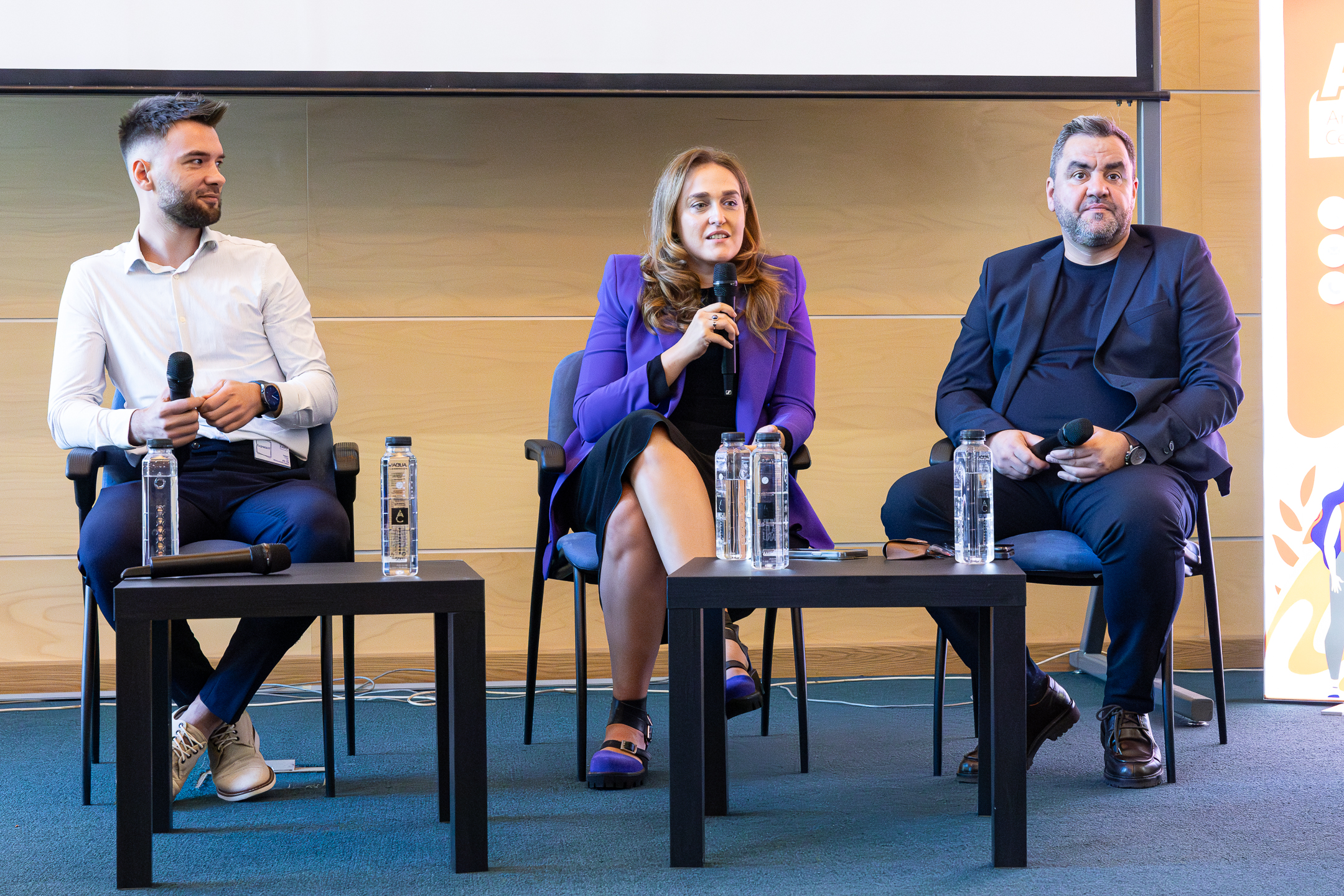
Accessibility Takes Willingness, Not Large Budgets: 3 Strategies to Increase Inclusion in Your Business Culture
In today’s business landscape, accessibility is a necessity, not just a “nice to have.” Making workplaces and products accessible benefits everyone, including but not limited to individuals with disabilities. It’s about adopting the right mindset, showing empathy, and taking action, not just allocating large budgets. As part of the inauguration of the first AccessABILITY Expo at the National Library in Bucharest, the RAAD 2024 (Romanian Accessibility Awareness Day) hosted its first panel, focusing on creating a workplace culture that promotes inclusion and accessibility.
Andreea Groenendijk-Deveau, a London-based social entrepreneur and CEO of Renard Group, co-organiser of AccessABILITY Expo, moderated the discussion between Estera Anghelescu Recruiting and Employer Branding Director at Kaufland, Ștefan Catalin Sfeatcu Project Manager of Kaufland’s A.C.C.E.S programme, and Codrin Podaru, Country Manager at Accessi+. Find below three strategies all companies can employ to increase accessibility in their communities:
Start with Leadership
Building a culture of accessibility begins with leadership’s willingness to invest in the values at the heart of inclusion: empathy, respect and courage. Estera Anghelescu, Recruiting and Employer Branding Director at Kaufland, emphasised the importance of personal reflection when recruiting, integrating and interacting with disabled people or those from disadvantaged backgrounds into a company:
You just have to be open to being human. We’re lucky that we were born healthy, but something can always happen. It could be an accident, it could be anything. You never know that you’ll be 100% healthy your whole life.”
By putting yourself in the shoes of someone with a disability, you develop empathy, which is crucial for driving meaningful change.
Leaders’ openness leads to recognising gaps and a desire to address these. Estera recalled their office lacked a fully accessible bathroom for a colleague when they first started the A.C.C.E.S programme, which is dedicated to recruiting, integrating, and advocating for disabled people in the workplace and society. “George Balta came to our team, and we didn’t have everything we needed. We had one accessible toilet, but it wasn’t nearby. You couldn’t get there in 30 seconds if you needed to,” she said. This kind of realisation improved the teams’ awareness and readiness to act. Since then they have ensured all newly opened Kaufland shops had a disabled toilet specifically for disabled staff and clients and a social area for staff on the ground floor.
Ștefan Catalin Sfeatcu Project Manager of the A.C.C.E.S programme added:
The reactions [to interacting, recruiting and integrating disabled staff] are various: fear and run away, fear and stay, fear and learn. For us, it was research, research, research. It wasn’t about big budgets. The big effort is at the mental level, at the level of openness, at the level of humanity. Leaders should foster a mindset of learning and empathy to prioritise accessibility.
Engage and Involve Disabled People in the Process
To create a truly inclusive environment, it’s essential to involve disabled individuals in both recruitment and workplace integration. Estera pointed out the importance of ongoing feedback: “Part of the success of the [A.C.C.E.S] program is that we are constantly in contact with our colleagues, getting feedback from them.” This kind of regular engagement allows businesses to improve accessibility daily, ensuring that needs are met proactively.
Stefan noted: “We have managers who would like to have more colleagues with disabilities in their teams because their retention, loyalty, and involvement are much more consistent.” By actively seeking and involving people with disabilities, companies not only improve diversity but also benefit from a more committed workforce.
Creating awareness among existing employees is equally important. For example, Kaufland’s team organised a virtual reality (VR) experience to simulate the challenges of being in a wheelchair during the celebration of the 5th anniversary of A.C.C.E.S. Many non-disabled participants said they had never fully understood the difficulties of navigating the infrastructure of the city and doing other daily tasks in a wheelchair until they experienced it through VR. The Kaufland team also organised experiences to stimulate the lived experience of visually and hearing impaired and dyslexic individuals.
As Stefan emphasised: “We have to communicate, we have to become more aware ourselves and then tell others.” Awareness campaigns like this go a long way in fostering empathy and understanding within the workforce.
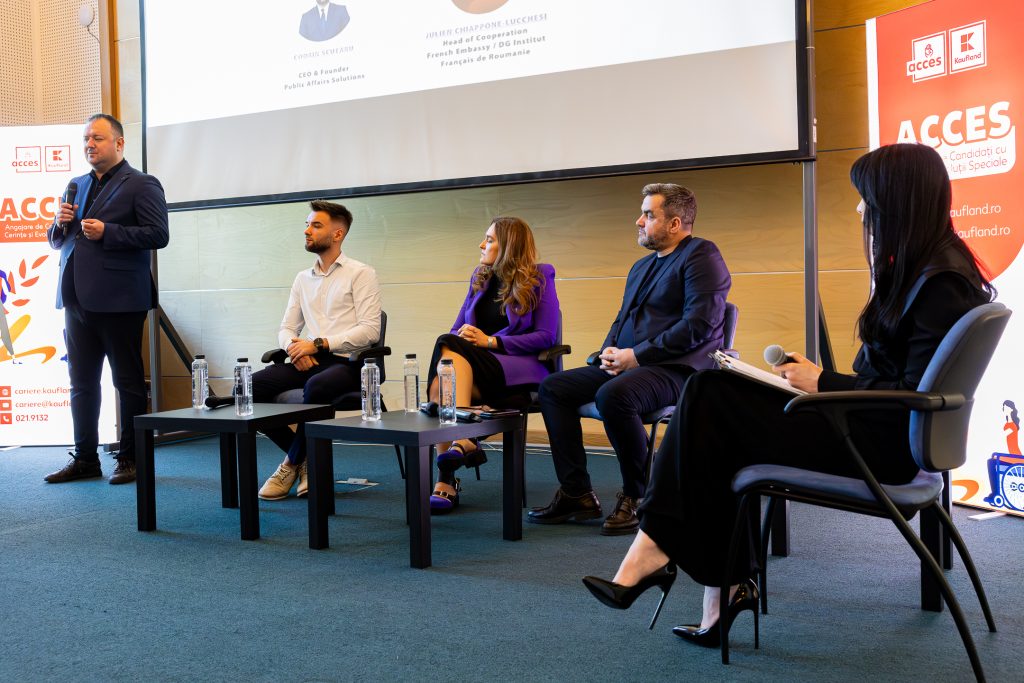
Codrin Scutaru, who gave an opening speech, Codrin Podaru, Estera Anghelescu, Stefan-Catalin Sfeatcu and moderator Andreea Groenendijk-Deveau
Invest in Digital and Physical Accessibility
Companies should also focus on improving both digital and physical accessibility. At Kaufland, one step in this direction involved partnering with Accessi+ to audit job portals and ensure accessibility. This collaboration expanded job opportunities for people with disabilities, benefiting both the business and the wider community.
Stefan stressed the importance of infrastructure: “The fears [of navigating the city to get to your job] start at home for people with disabilities, that’s what we were told.” Ensuring that physical spaces, such as office buildings and retail environments, are fully accessible is a critical part of inclusion.
In addition to physical spaces, digital accessibility can open new business opportunities. Codrin Podaru, Country Manager at Accessi+ pointed out:
The moment a company invests in digital as well as physical accessibility, new horizons open up. For instance, a more accessible website can increase the number of online orders while reducing abandonment rates.
Fostering an accessible business culture doesn’t require massive financial investment but does demand empathy, commitment, and action. By engaging leadership, involving disabled employees, and improving both physical and digital accessibility, businesses can not only enhance their work culture but also expand their market reach and improve employee and client loyalty.
This article was written using the Neurodiverse Connection’s guide on inclusive language. For details have a look here.
Organisers
Sponsors
-

- Gold Sponsor
-

- Silver Sponsor
-

- Strategic Sponsor
-

- In-Kind Sponsor
Supporters

Strategic Partners

Media Partners


